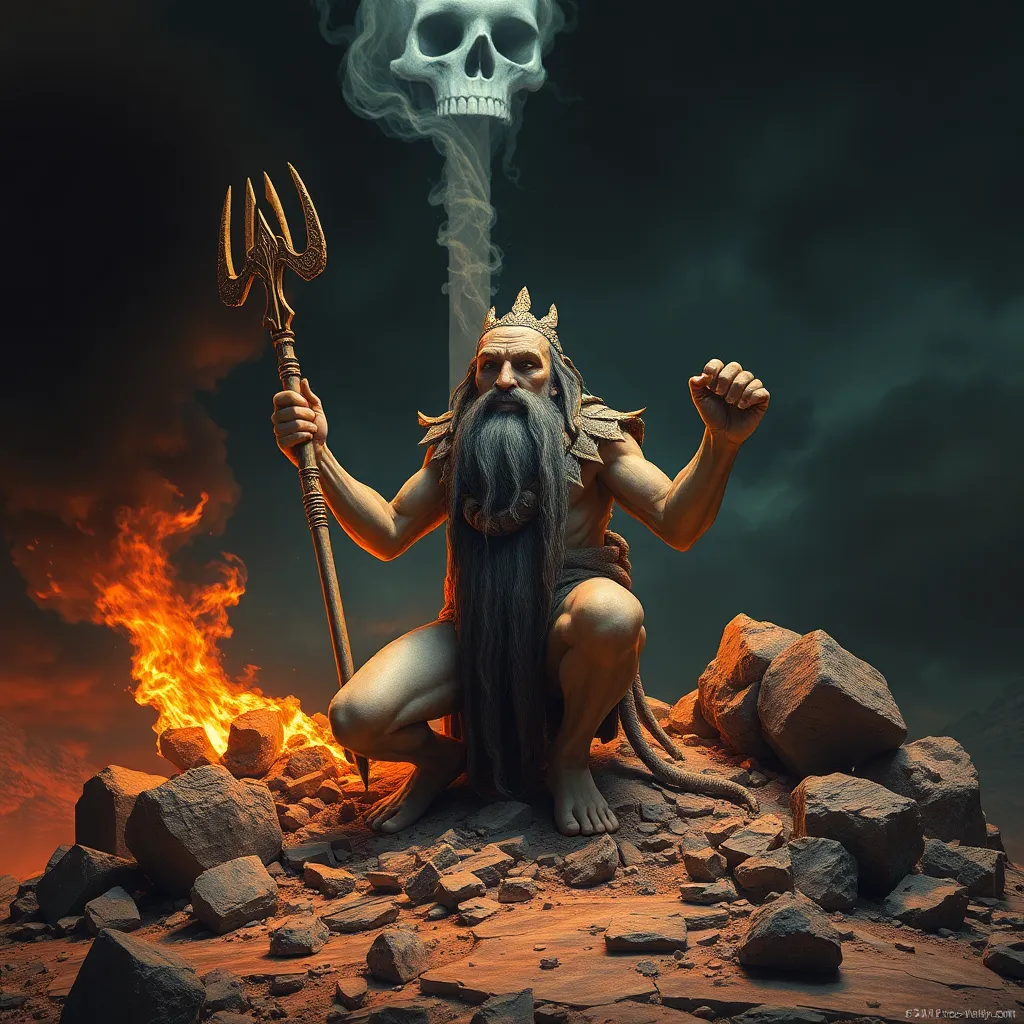The Role of Cyclopes in the Myths of Creation and Destruction
I. Introduction
The Cyclopes, one-eyed giants of Greek mythology, hold a unique position in the pantheon of mythological figures, embodying both the elements of creation and destruction. Their multifaceted roles in ancient narratives make them essential to understanding the dynamics of power, craftsmanship, and chaos. This article delves into the significance of Cyclopes in creation and destruction myths, drawing on various ancient texts and interpretations.
II. Historical Context of Cyclopes
The mythology surrounding Cyclopes traces back to ancient cultures, particularly in the Greek tradition. They are often depicted as formidable beings, characterized by their singular eye and immense strength.
A. Origins of Cyclopean mythology in ancient cultures
Various ancient civilizations, including the Greeks and Romans, contributed to the rich tapestry of Cyclopean myths. The term “Cyclopean” itself refers not only to these mythical beings but also to the massive stone structures associated with them, suggesting a deep connection between the giants and monumental architecture.
B. Key sources: Hesiod, Homer, and other ancient texts
Key literary sources that highlight the Cyclopes include:
- Hesiod’s “Theogony” – where the Cyclopes are depicted as craftsmen of the gods.
- Homer’s “Odyssey” – which introduces Polyphemus, the most famous Cyclops.
- Other ancient texts – that explore the myths and tales surrounding these beings.
C. Evolution of the Cyclopes’ portrayal over time
Over time, the representation of Cyclopes evolved from formidable creators to chaotic figures, reflecting the changing values and fears of societies. Initially viewed as powerful allies of the gods, they later became symbols of man’s primal fears and the unpredictable nature of the universe.
III. Cyclopes as Creators
In the realm of creation, the Cyclopes are pivotal figures, particularly in Hesiod’s account.
A. The Cyclopes in Hesiod’s “Theogony”
1. Their role in forging Zeus’s thunderbolts
In “Theogony,” the Cyclopes are credited with crafting Zeus’s thunderbolts, essential tools in his battle against the Titans. This act of creation signifies their importance in the cosmic order and establishes them as master artisans.
2. Significance of craftsmanship in creation myths
Their craftsmanship symbolizes the raw power of creation, as they mold and forge weapons that shape the destiny of gods and mortals alike.
B. Symbolism of the Cyclopes as master builders
1. Connection to ancient architecture and the Cyclopean structures
Cyclopean architecture, characterized by massive stone walls and monumental structures, reflects the giants’ legendary strength and skill. Such structures, found in ancient ruins, evoke the Cyclopes’ enduring legacy as creators.
2. The theme of creation through destruction
The Cyclopes exemplify the idea that creation often arises from chaos and destruction, underscoring the interconnectedness of these themes in mythology.
IV. Cyclopes in the Context of Destruction
While the Cyclopes are creators, they also embody chaos and destruction, particularly during pivotal mythological battles.
A. The Cyclopes and the Titanomachy
1. Their involvement in the battle against the Titans
The Cyclopes played a crucial role in the Titanomachy, the epic battle between the Olympian gods and the Titans. Their weapons, forged for Zeus, were instrumental in defeating the Titans, marking a significant shift in power in the cosmos.
2. The consequences of their actions for the cosmos
The victory over the Titans represented not only the triumph of order over chaos but also set the stage for a new era in the mythological narrative.
B. Cyclopes as agents of chaos
1. Examples of destruction in myths
In Homer’s “Odyssey,” Polyphemus showcases the destructive potential of Cyclopes when he captures Odysseus and his men, leading to chaos and tragedy. Such narratives highlight the unpredictability of Cyclopean beings.
2. The duality of creation and destruction in their narratives
The Cyclopes’ dual nature emphasizes the theme that creation and destruction are often intertwined, reflecting the complexities of existence.
V. Cultural Interpretations of Cyclopes
The interpretation of Cyclopes varies across cultures, adapting to different societal values and fears.
A. Differences in interpretation across various cultures
While Greek mythology presents Cyclopes as both creators and destroyers, other cultures may emphasize different aspects of their character.
B. The Cyclopes in Roman mythology and later adaptations
In Roman mythology, Cyclopes retained their Greek characteristics but were often depicted in new light, reflecting Roman values.
C. Influence of Cyclopean myths on modern literature and media
Today, the myth of the Cyclopes continues to inspire contemporary literature, film, and art, serving as a metaphor for humanity’s relationship with chaos and creativity.
VI. Thematic Analysis of Cyclopes in Mythology
The myths surrounding Cyclopes are rich with thematic significance, particularly regarding power and human nature.
A. The dual nature of power: creation vs. destruction
The Cyclopes embody the duality of power, showcasing how the same force can lead to both creation and destruction.
B. The symbolism of the single eye
Their single eye represents a unique perspective, often paralleling themes of focus, insight, and the limitations of perception.
C. The Cyclopes as reflections of human traits and societal fears
Through their narratives, Cyclopes reflect human traits such as strength, creativity, and the potential for chaos, serving as cautionary figures in mythology.
VII. Conclusion
The Cyclopes hold a significant place in the myths of creation and destruction, embodying the complexities of power and chaos. Their legacy endures in modern storytelling, reminding us of the intricate balance between creation and destruction in our own lives. Understanding Cyclopes within their cultural contexts enriches our appreciation of these mythological figures and their relevance in contemporary narratives.
VIII. References
Primary and secondary sources used in this article include:
- Hesiod, “Theogony.”
- Homer, “Odyssey.”
- Various scholarly articles and books on Greek mythology.
For further reading on Cyclopes and related mythological themes, consider:
- “The Complete World of Greek Mythology” by Richard Buxton.
- “Mythology: Timeless Tales of Gods and Heroes” by Edith Hamilton.




